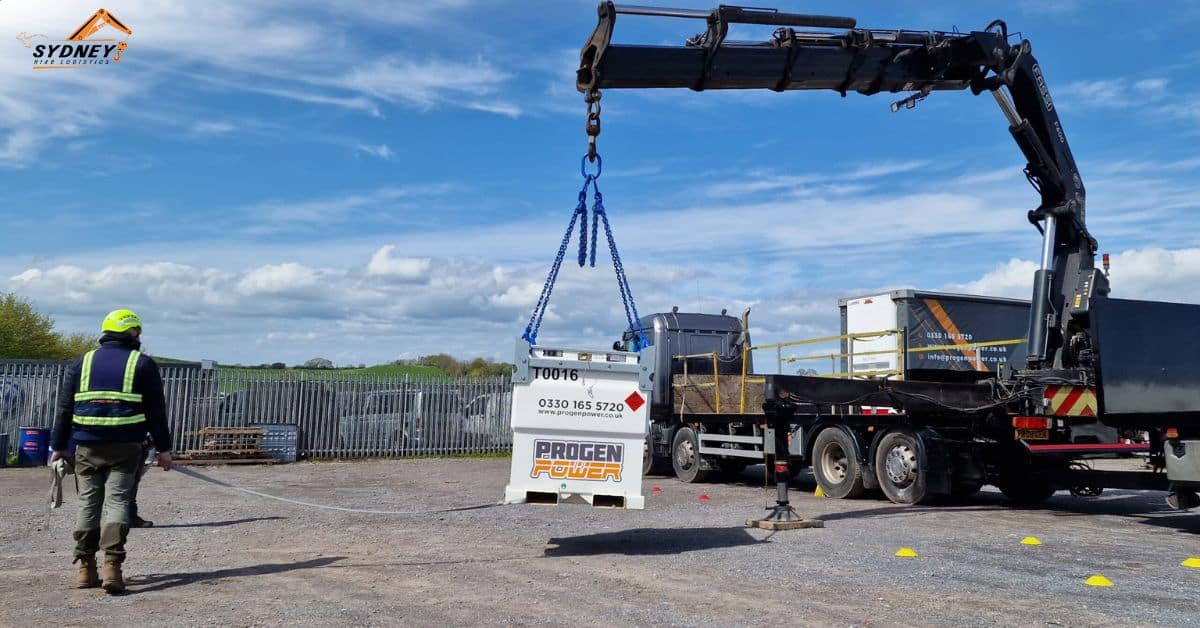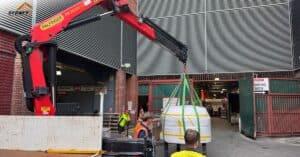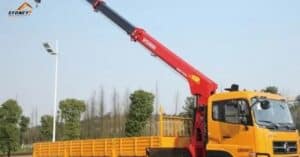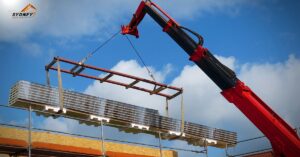When planning a delivery involving a Hiab truck, proper site preparation is crucial to ensure that the process is smooth, efficient, and safe. Hiab trucks, equipped with a hydraulic crane for loading and unloading, are versatile vehicles that can transport a wide variety of materials, from construction equipment and building materials to heavy machinery and industrial goods. However, to maximise the effectiveness of these trucks, careful planning and site preparation are essential.
In this blog, we will provide you with a comprehensive guide on how to prepare your site for Hiab truck delivery. This advice is designed to help you avoid delays, reduce the risk of damage to goods or property, and ensure safety during loading and unloading processes.
1. Understand the Hiab Truck’s Capabilities and Limitations
Before preparing your site, it’s important to have a clear understanding of what a Hiab truck can and cannot do. Hiab trucks come in various sizes and capacities, with different reach capabilities. Some trucks may have a crane that can extend over 10 meters, while others may have a more limited reach.
When planning the delivery, you should:
- Confirm the truck specifications with your transport company (such as Sydney Hiab Logistics).
- Understand the maximum weight the Hiab crane can lift, as well as the height and width limitations.
- Factor in the reach of the crane when positioning your materials for easy access.
Knowing these details will allow you to make informed decisions about how to arrange your site for the most efficient use of the Hiab truck’s capabilities.
2. Clear the Site and Ensure Adequate Space
The first step in preparing your site for Hiab delivery is ensuring there’s enough space for the truck and crane to operate. Hiab trucks require a clear area for maneuvering, parking, and lifting the load. A cluttered or restricted space will hinder the process, causing delays and potential risks.
To create an optimal environment for the Hiab truck:
- Remove obstacles: Clear away any debris, vehicles, machinery, or structures that could obstruct the truck’s path.
- Provide ample turning space: Ensure the truck can access the delivery area easily and without obstructions.
- Allow space for the crane’s reach: The crane arm will extend during the loading or unloading process. Make sure the area has enough space for the crane to move freely.
- Check for overhead obstructions: Look out for low-hanging branches, wires, or other overhead obstructions that could interfere with the crane’s operation.
3. Ensure the Ground is Stable and Level
The stability of the ground is a critical factor in ensuring the safety of the Hiab truck during loading and unloading. A truck crane that operates on unstable or uneven ground can lead to accidents, damage to goods, and even injury to workers.
To prepare your site:
- Check the ground for stability: Make sure the ground is solid and can support the weight of the truck without shifting or sinking.
- Ensure a level surface: An uneven surface can cause the truck to tip over or affect the crane’s performance. If possible, use a level area such as a concrete or asphalt surface.
- Consider temporary ground reinforcement: If you are working on soft or uneven terrain, you may need to use timber mats or plates to stabilise the ground.
In some cases, a Hiab delivery might require ground preparations like laying down gravel or compacting soil to ensure a stable base for the truck.
4. Provide Adequate Access Roads
Access roads leading to your site should be wide, clear, and strong enough to accommodate the weight of the Hiab truck. It’s essential to provide an easy route for the vehicle to reach the delivery point.
When preparing access roads:
- Ensure roads are wide enough: Hiab trucks are often quite large and require sufficient width for easy movement. Narrow lanes or tight corners can prevent the truck from reaching the site efficiently.
- Check road conditions: Ensure the roads are free from deep potholes, mud, or debris. Uneven or poorly maintained roads can make it difficult for the Hiab truck to reach the site safely.
- Be aware of weight limits: Ensure that the roads and bridges leading to the delivery site can safely support the weight of the Hiab truck and its load.
If your site is in a particularly difficult-to-reach area, you may need to make special arrangements to facilitate truck access, such as temporarily removing gates, securing power lines, or adjusting fences.
5. Communicate Delivery Details in Advance
Clear communication with your Hiab truck service provider is crucial for ensuring that everything goes as planned. Providing details about your site ahead of time will allow the transport company to plan the delivery process more effectively.
Important details to communicate include:
- Exact delivery location: Provide a clear address and any specific directions to help the driver navigate to the site.
- Site layout: Describe the layout of the site, including any potential obstacles or tight spots that the driver should be aware of.
- Material details: Share the type, size, and weight of the materials being delivered so the Hiab operator can prepare the appropriate equipment.
- Safety concerns: If there are any hazards on the site (e.g., power lines, uneven terrain, narrow access points), make sure to inform the transport company beforehand.
By providing all the relevant information in advance, the logistics team will be better prepared to handle the delivery safely and efficiently.
6. Set Up Safety Zones Around the Delivery Area
Safety is paramount when working with heavy machinery such as Hiab trucks. It’s important to create safety zones around the delivery area to protect workers, site personnel, and the public during the loading and unloading process.
To ensure safety:
- Establish a safety perimeter: Mark off the area around the Hiab truck and crane with warning signs or barriers to keep unauthorised individuals at a safe distance.
- Post safety personnel: If your delivery involves large or heavy materials, consider assigning someone to direct traffic or guide the crane operator during the process.
- Ensure clear communication: Establish clear lines of communication with the Hiab driver and crane operator, particularly if there are other people present on site.
A proper safety setup reduces the risk of accidents, protects workers, and ensures that the delivery can proceed without interruptions.
7. Prepare for the Unloading Process
When the Hiab truck arrives at your site, you’ll want to ensure that unloading goes smoothly. To prepare for the unloading process:
- Prepare unloading zones: Identify a suitable area where the materials will be unloaded and placed. This should be clear of obstacles and ready for the materials to be dropped off.
- Have appropriate equipment on hand: If the delivery requires additional handling (e.g., a forklift or other machinery), ensure that these are available and ready for use.
- Double-check any special instructions: If there are any specific instructions for unloading (e.g., handling delicate equipment or positioning materials in a certain way), ensure that these are clearly communicated to the Hiab driver.
By planning the unloading process in advance, you can minimise downtime and ensure that the materials are placed exactly where they are needed.
8. Consider Weather Conditions
Weather can greatly affect the performance of a Hiab truck and the safety of the delivery process. Adverse weather conditions such as heavy rain, high winds, or icy roads can make the operation of a Hiab crane more dangerous and less efficient.
When preparing for a delivery:
- Check the weather forecast: Monitor the weather leading up to the delivery date. If adverse weather conditions are expected, it may be necessary to reschedule or adjust the delivery time.
- Prepare for contingencies: In case of inclement weather, ensure that there are plans in place to protect sensitive materials and prevent delays.
In some cases, extreme weather conditions may make it unsafe to operate a Hiab truck, so it’s important to remain flexible and prioritise safety.
Conclusion
Preparing your site for Hiab truck delivery is essential for ensuring a smooth, efficient, and safe operation. By understanding the truck’s capabilities, clearing the site, providing stable ground, ensuring adequate access, and establishing safety measures, you can ensure that your delivery goes off without a hitch. At Sydney Hiab Logistics, we are committed to providing reliable, efficient, and professional services for your transport needs, and proper site preparation plays a key role in achieving that goal.
With the right preparation, your Hiab truck delivery will be completed with minimal delays, ensuring your materials arrive safely and on time. Whether it’s a small construction project or a large industrial delivery, following these steps will help make the process seamless and hassle-free.




